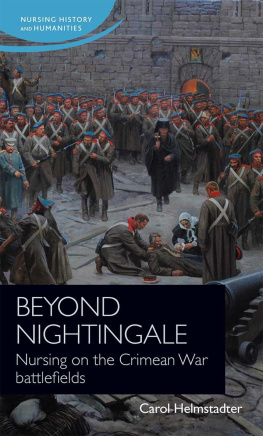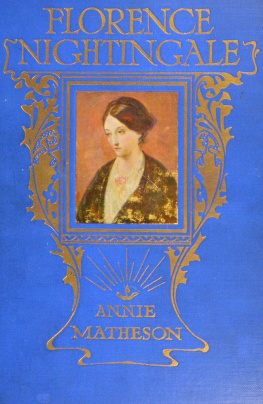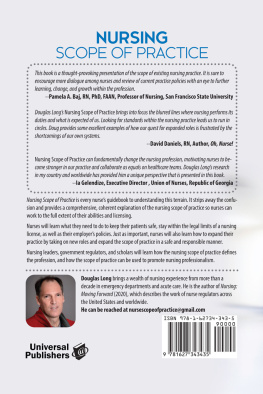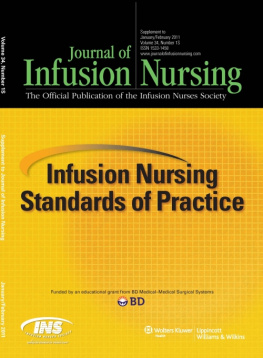Beyond Nightingale
Series editors: Christine E. Hallett and Jane E. Schultz
This series provides an outlet for the publication of rigorous academic texts in the two closely related disciplines of Nursing History and Nursing Humanities, drawing upon both the intellectual rigour of the humanities and the practice-based, real-world emphasis of clinical and professional nursing.
At the intersection of Medical History, Womens History and Social History, Nursing History remains a thriving and dynamic area of study with its own claims to disciplinary distinction. The broader discipline of Medical Humanities is of rapidly growing significance within academia globally, and this series aims to encourage strong scholarship in the burgeoning area of Nursing Humanities more generally.
Such developments are timely, as the nursing profession expands and generates a stronger disciplinary axis. The MUP Nursing History and Humanities series provides a forum within which practitioners and humanists may offer new findings and insights. The international scope of the series is broad. It embraces all historical periods and includes both detailed empirical studies and wider perspectives on the cultures of nursing.
Previous titles in this series:
Mental health nursing: The working lives of paid carers in the nineteenth and twentieth centuries
Edited by Anne Borsay and Pamela Dale
Negotiating nursing: British Army sisters and soldiers in the Second World War
Jane Brooks
One hundred years of wartime nursing practices, 18541953
Edited by Jane Brooks and Christine E. Hallett
Curing queers: Mental nurses and their patients, 193574
Tommy Dickinson
Histories of nursing practice
Edited by Gerard M. Fealy, Christine E. Hallett and Susanne Malchau Dietz
Nurse Writers of the Great War
Christine Hallett
Who cared for the carers? A history of the occupational health of nurses, 18801948
Debbie Palmer
Colonial caring: A history of colonial and post-colonial nursing
Edited by Helen Sweet and Sue Hawkins
BEYOND NIGHTINGALE
NURSING ON THE CRIMEAN WAR BATTLEFIELDS
CAROL HELMSTADTER
Manchester University Press
Copyright Carol Helmstadter 2020
The right of Carol Helmstadter to be identified as the author of this work has been asserted by her in accordance with the Copyright, Designs and Patents Act 1988.
Published by Manchester University Press
Altrincham Street, Manchester M1 7JA
www.manchesteruniversitypress.co.uk
British Library Cataloguing-in-Publication Data
A catalogue record for this book is available from the British Library
ISBN 978 1 5261 4051 7 hardback
First published 2020
The publisher has no responsibility for the persistence or accuracy of URLs for any external or third-party internet websites referred to in this book, and does not guarantee that any content on such websites is, or will remain, accurate or appropriate.
Cover image: Crimean War (185356), Siege of Sevastopol, 185455 (detail) by Franz Alekseyevich Roubaud (18561928). The city, on the Black Sea, was besieged for 11 months. Museum of Heroic Defense and Liberation of Sevastopol, Crimean Peninsula, Ukraine. (Photo by Prisma/UIG/Getty Images)
Typeset by Servis Filmsetting Ltd, Stockport, Cheshire
Contents
Source: WI Ms 8895, Letter 78
Source: Scrive, Relation, p. 127
Source: Scrive, Relation, p. 211
Source: Scrive, Relation, p. 240
Source: Scrive, Relation, p. 278
This book has been a long time in the making and so many people have helped me with it that I hardly know where to start in thanking all those who gave their valuable time to assist me. Perhaps first I should thank Anna LaTorre of the University of Milan, who generously translated and sent me archival Piedmont-Sardinian material, and Jan Schallert, who did all the Pirogov translations. I am also most appreciative of the help Marie Smith and Martyn Bredehoeft gave me with my execrable German, and grateful to Defne Berkings for providing translations of Turkish books and correspondence with Turkish archives.
The archivists who helped me find my way through the rich resources for this project are far too numerous to name, but I would particularly like to thank Susan McGann, archivist of the Royal College of Nursing, who so kindly introduced me to archival research when I first started working on nineteenth-century nursing history. The archivists of all the sisterhoods were also exceptionally helpful and generous with their time. I am grateful to Professor Lynn McDonald for access to the electronic resources of the wonderful Collected Works of Florence Nightingale and I am indebted to Alan Gilliland who contributed his vast knowledge of historical cartography in his excellent maps. I also thank both the Canadian and American Associations for the History of Nursing. Without their networking opportunities I would never have found so many resources or so many helpful historians, both here in Canada and in Australia, the United States and United Kingdom.
I thank Professor Yves Saunier of Laval University, who gave me most valuable help with French sources, and I especially thank Professor Trevor Lloyd of the University of Toronto, without whose advice and kind encouragement this book could not have been written.
I gratefully acknowledge the large grants from the Social Sciences and Humanities Research Council of Canada and Associated Medical Services (formerly the Hannah Institute for the History of Medicine) which made the research for this book possible. I am equally grateful for the numerous smaller grants I received from various bodies as diverse as the History Department of Wellesley College and the Nurses Alumnae Association of the Toronto hospital where I worked.
| BA | Bermondsey Annals in Convent of Mercy, Bermondsey Archives |
| BU | Boston University Nursing Archives |
| BL | British Library Additional Manuscripts |
| LMA | London Metropolitan Archives |
| PP | United Kingdom House of Commons: Sessional Papers 185455 (Parliamentary Papers) |
| WI | Wellcome Institute |
The picture on the cover, showing a Sister of the Exaltation of the Cross tending a wounded soldier, is a detail from Franz Roubauds panorama painting of the Russian victory on 18 June 1855 when the Sevastopol garrison repulsed the allied assault on the Malakhov.
All emphases in quotations are original.
The Russians used the Julian calendar (Old System or OS), which in the 1850s was roughly twelve days ahead of our Gregorian calendar or New System (NS). For example, when Tolstoy wrote Sevastopol in August he was writing about the fall of Sevastopol on 27 August OS, which we date as 8 September. In order to avoid confusion between the two dating systems, the standard practice when using Russian texts is to give both dates: 27 August/8 September. When I do not give both dates, I am using the new or Gregorian dating.










